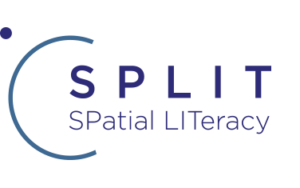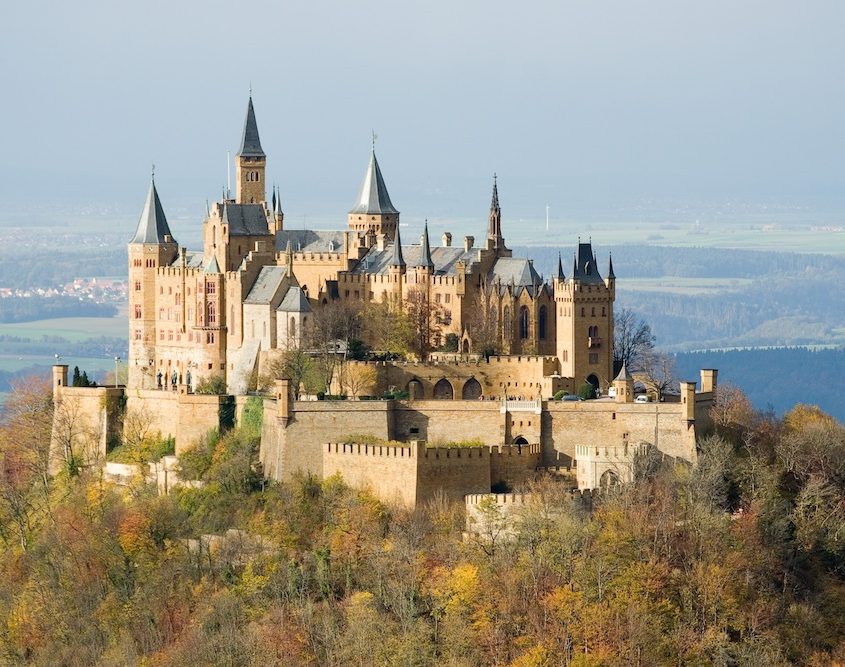ABSTRACTS:
SPLIT REMOTE SENSING SUMMER SCHOOL 2018
TOPICS AND ABSTRACTS:
Dr. Martin Isenburg
-Hands-on Course to LiDAR processing with LAStools
Dr. Jean-Philippe Gastellu-Etchegorry
-The DART Discrete Anisotropic Radiatie Transfer) model
Dr. Jan Kropáček
-Remote Sensing in Geo-hazard Assessment
Dr. Claudia Notarnicola
-Biophysical parameters from remotely sensed imagery as a tool for monitoring and evaluating ecosystem biodiversity
Dr. Petra Simova / Dr. Vitek Moudry / Katka Gdulova/Honza Komarek
-Background for mapping with drones
Dr. Neha Joshi
-An Introduction to Synthetic Aperture Radar
Honza Komarek / David Moravec
-Pre-processing and Processing of UAV data
..
Dr. Martin Isenburg
Hands-on Course to LiDAR processing with LAStools
This course will include both theoretical and hands-on lectures on the LiDAR processing tools, which are widely known for their blazing speeds and high productivity. The software combines robust algorithms with efficient I/O and clever memory management to achieve high throughput for data sets containing billions of points. The LAStools software suite has deep market penetration and is heavily used in the commercial sector, government agencies, research labs, and educational institutions alike — filtering, tiling, rasterizing, triangulating, converting, clipping, quality-checking, etc.
More information can be found at: http://rapidlasso.com/2015/09/21/creating-dtms-from-dense-matched-points-of-uav-imagery-from-senseflys-ebee/
______________________________________________
Dr. Jan Kropáček
Remote Sensing in Geo-hazard Assessment
Natural hazards cause every year a huge damage on settlements and infrastructure and losses on human lives worldwide. Increasing vulnerability in combination with climate changes lead to a growing risk for the society. Remote sensing proved to be a useful tool for monitoring of a number of parameters related to geohazards. Earth observation data can provide a spatially explicit and timely information on dormant hazardous processes. The presence of specific surface features and their movements reveal hazardous processes and provide an early warning. Minor surface movements can be detected by SAR interferometry. Volume changes due to natural disasters can be quantified with the help of 3D reconstruction relying on terrestrial air- or satellite- born instruments. Changes in spectral properties are used for an effective detection of forest fires and burned areas. Remote sensing data analysis also provide a useful input for predictive modeling.
Several national and international organizations provide spatially explicit information on damage extent using data from earth observation systems. They contribute on a routine base to disaster monitoring and during the post disaster relieve.
In the theoretical part basic remote sensing systems approaches will be reviewed focusing on their utility for hazard assessment: analysis of historical aerial and satellite photographs, spectral indices, multispectral analysis, feature tracking, 3D reconstruction and SAR interferometry.
In the following, the main applications will be presented and accompanied by examples. This will include:
- Optical and microwave approaches for mapping of flooded areas.
- Monitoring of landslides and detection of landslide features.
- Mapping of co-seismic deformation and damage assessment of earthquakes
- Mapping of snow disaster in the Himalayas due to a tropical cyclone movement
- Forest fires: fire detection and fire severity, detection of burned areas
- Tsunamis: early warning systems and damage assesment
- Detection of volcanic activity
Special attention will be payed to natural hazards generated by deglaciation and to landslides:
- Feature and amplitude tracking for analysis of landslide movements
- Monitoring of glacier retreat and grow of glacial lakes.
- Assessment of glacial lake outburst floods (GLOFs)
- Landsliding due to the glacier debutressing
The practical part will include a hands-on experience with data portals providing products related to geo-hazards and satellite data processing.
_______________________________________
Dr. Jean-Philippe Gastellu-Etchegorry
The DART Discrete Anisotropic Radiatie Transfer) model
The theoretical and hands-on sessions of this course will focus on basic and advanced concepts of the Discrete Anisotropic Radiative Transfer (DART) model. DART models radiative transfer in the system “Earth – Atmosphere”, from visible to thermal infrared. It simulates measurements (images, waveforms,…) of passive and active (lidar) satellite/plane sensors, as well as the radiative budget, for urban and natural landscapes. DART creates landscapes and/or imports them as 3D objects (tree, house,…).
DART is designed for Linux and Windows systems. It works with SQL databases for its data input (atmosphere, optical properties of material,…) and to store the results. It has an advanced graphical interface for entering data and displaying results.
In particular, the course will teach how to generate major DART products such as those related to satellite/plane imagery of passive and active (lidar) sensors, which are very useful for sensitivity studies (e.g., what is the impact of topography on the reflectance, brightness temperature and waveform lidar). Major DART tools are:
– Display of simulated images and 1D/3D Lidar waveforms.
– Launch sequence of simulations with varying parameters (date, LAI,…). It allows one to create LUTs (Look Up Tables) of reflectance and brightness temperature values.
– Reflectance and brightness temperature spectra.
– Reflectance and brightness temperature for the spectral bands of satellite sensors.
– Import and management of 3D objects, natural (corn, wheat,…) and urban.
– Correction of topographic effects on remote sensing images.
– Analysis of 3D radiative budget.
– Creating 3D objects as a set of 3D objects.
__________________________________________
.
Dr. Claudia Notarnicola
Biophysical parameters from remotely sensed imagery as a tool for monitoring and evaluating ecosystem biodiversity
Today together with Essential Climate Variable, it has started the process of the definition of Essential Biodiversity Variable which can support the monitoring and protection of ecosystem biodiversity.
In this context, the benefits of remotely sensed imagery for biodiversity indicators are related to the synoptic view, regular and repeatable acquisitions, multi-annual time series of observations and cost-effectiveness for remote and inaccessible areas. Moreover, the new satellite sensors (such as the Sentinel family) are notably increasing the remote sensing capabilities. Such large data availability has determined the necessity to develop accurate and robust retrieval methods to improve the estimation of these variables from remotely sensed imagery.
The retrieval process of these parameters from satellite images (optical and radar) is typically a challenging task and it falls in the category of ill-posed problem. This means that beyond the non-linearity of the relationship between input features (sensor measurements) and the target variables (soil moisture, biomass, etc.), more than one combination of soil characteristics may lead to the same electromagnetic response at the sensor. Furthermore, given a scene of interest, each system will provide information on a different aspect of the phenomena at the ground (e.g., the spatial patterns or the temporal dynamic) and could be also affected on different extents by different disturbing factors.
This suggests the importance of a synergic use of multiple available remote sensing systems (from satellite to drone based sensors) for a comprehensive, accurate and robust understanding and monitoring of the natural processes at the ground. On the other side the proper selection of the retrieval approach is a key issue.
In this context, the seminar will present currently available techniques for the retrieval of biophysical parameters from remotely sensed data addressing inversion of physical-based models, parametric and non-parametric approaches such as Bayesian procedure, Neural Networks, Support Vector Regression and Ensemble techniques. Each approach will be presented in specific applications indicating advantages, disadvantages and perspectives for the upcoming missions such as Sentinel 1 and 2. In addition the synergic use of different sensors (optical and radar) will be specifically addressed in the context of the retrieval process.
_____________________________________________________
Dr. Petra Simova / Dr. Vitek Moudry / Katka Gdulova
Background for mapping with drones:
- Brief introduction to land cover / habitat mapping with drones. Typical research aims and issues with drones multispectral mapping in comparison with high resolution satellites. Lecture; Petra Simova
- Basic principles of GNSS.Preparing GNSS RTK receivers for the survey of ground control points. Lecture combined with indoor training in groups; Vitezslav (Vitek) Moudry
- Brief introduction to Collector for ArcGIS. How to collect data with a tablet or smart phone. Lecture combined with indoor training; Katerina (Katka) Gdulova
- Outdoor training introduction.
_____________________________________________________
Dr. Vitek Moudry / Katka Gdulova / Honza Komarek
Flight campaign in the University garden (named Libosad)
- Localization of ground control points with GNNS. Outdoor training; Vitek Moudry, Katka Gdulova
- Flights – eBee fixed-wingand Kingfisher rotary-wing UAVs – Honza Komarek and other certificated pilots of the Faculty – Jiri (Jirka) Prosek, Ondrej (Ondra) Lagner, Petr Klapste
- Collecting of ground truth vegetation data with ArcGIS Collector, Vertex IV, GreenSeeker. Katka Gdulova, leader ______________________________________________________
Honza Komarek / David Moravec
Pre-processing and Processing of UAV data
- Basic of processing of UAV data, building mosaic and digital models. Demonstration of desktop and cloud computing time. Honza Komarek
- Supervised classification of multispectral imagery acquired form UAV. David Moravec
_____________________________________________
Dr. Neha Joshi
An Introduction to Synthetic Aperture Radar
The hands-on session will include work with OsGeo/QGIS for windows or linux, ESA SciHub DHuS, ASF Mapready software version 3.1.24 for Windows or Linux, and CURRENT VERSION of Sentinel Toolboxes for windows or linux.


